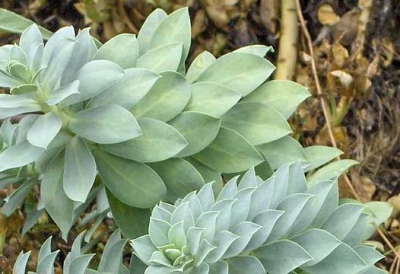Myrtle Spurge Noxious Weed
Plants on Colorado’s Noxious Weed List A are required to be eliminated when identified, whether that’s in a rock garden or spread across grazing land. Myrtle spurge weed control is very important as this highly competitive noxious weed A-lister that threatens local eco-balance if not eliminated.
Manual Myrtle Spurge Weed Control

Following a rainfall or spring thaw, dig up at least four inches of each plant’s taproot to help reduce the number of stems that will (oh, yes, they will) grow from whatever root might remain. Bag the gathered plants and seal (and label if your community has organic waste pickup) the bag securely.
Nobody likes a pushy neighbor, but nobody likes to spend the day digging up myrtle spurge only to have new seeds from the weeds next door sprout anew in their yard. Explain the Noxious Weed List A to your neighbors and encourage them to launch an attack similar to yours.
Chemical Myrtle Spurge Weed Control
Frequently, chemical treatments may be required in addition to manual removal of myrtle spurge. Depending on the expanse of infested property, multiple years of removal efforts might be required. The plant’s seeds remain viable for an average of eight years so even a full year of no visible growth doesn’t guarantee complete eradication.
SprayTech, Colorado noxious weed management team, can help you identify and develop a action plan for myrtle spurge weed control. Contact them at 720-248-0000 for more information.

